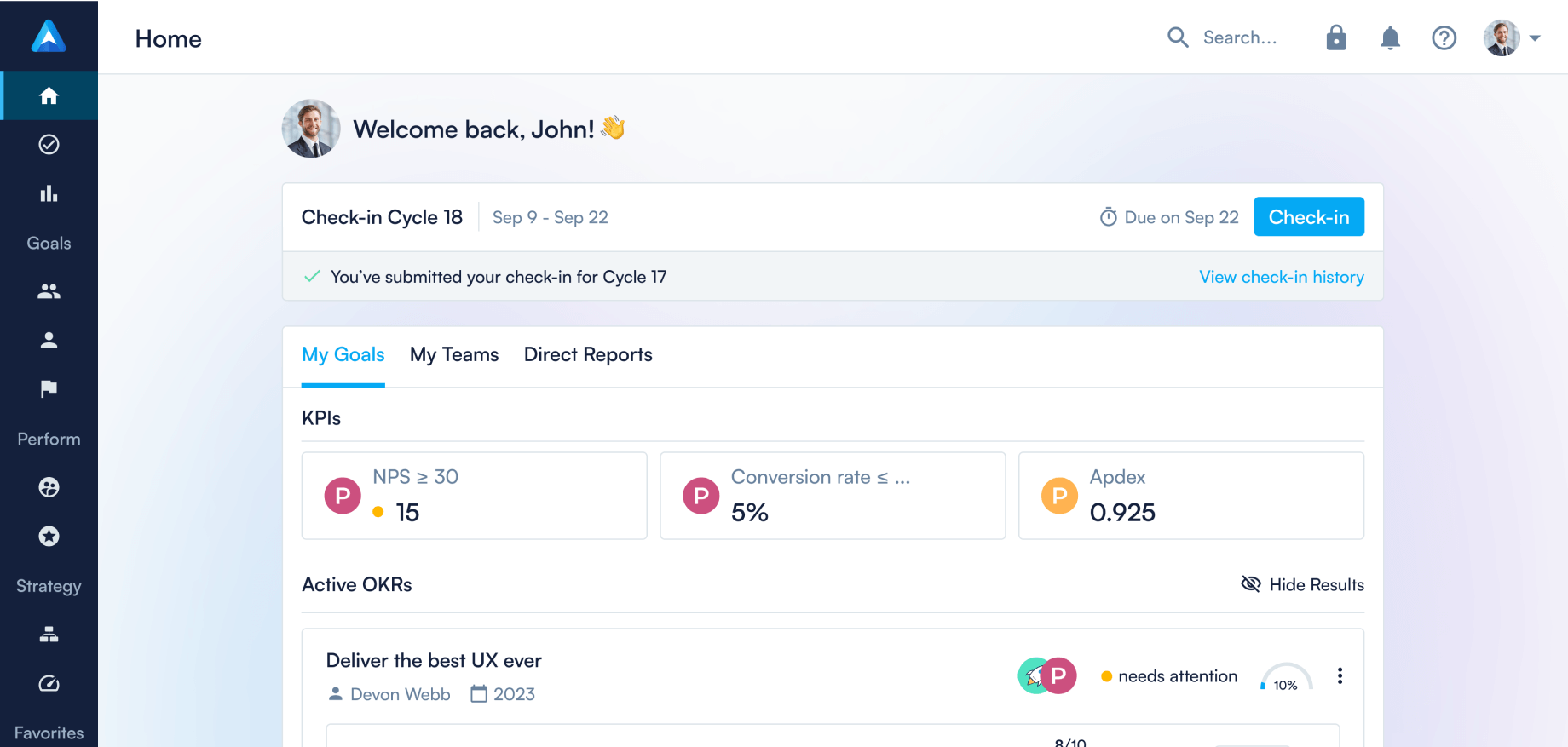
How an OKR helped us solve a critical problem, and grow as professionals

The internet is full of articles that highlight the benefits of OKR for businesses. For a change, it’d be good to highlight the amazing results that you — the people that make up an organization — can achieve by using the structured approach to problem-solving that OKR offers.
Such results not only positively impact the organization that you work for, they also speed up your personal development and accelerate the growth of your career.
Let me explain how, by walking you through a recent example of Perdoo.
The problem we faced at Perdoo
We find it important that the Perdoo platform is easily accessible to everyone. That’s why we offer a free version, and why you can easily create your own free account on perdoo.com — without ever having to speak to someone.
When our consultants do speak to prospects, these prospects highly value their expertise. They also appreciate understanding why Perdoo is built the way it is, and hearing about the science-based philosophy behind it. This is reflected in our numbers: the chance that a prospect converts is 3 times higher after a call with our consultants (of course there is some bias in this number).
However, the launch of our free version and the removal of barriers in our sign-up process resulted in a steady decline in the number of prospects that Sales engages with.
As you can imagine, this is a critical problem for Perdoo to tackle. But how do we fix this without creating friction again?
The OKR approach to problem-solving
It’s only human to start solving this problem without giving it too much thought. Most of us are action-oriented and we love solving problems. There’d be all sorts of experiments you could run. But for a good, long-term solution, we first need to understand the problem well. And we need to understand the conditions under which it should be resolved. In other words, before we start working on outputs, we need to understand the desired outcome.
I’ve worked for several years as a management consultant and was always surprised by how assignments were lacking specificity. The first hours (or day!) were usually spent clarifying the desired outcomes with the client and the conditions under which those have to be met. By asking critical questions, I helped the client make the assignment more and more specific — and thus more actionable for myself.
By using OKR to tackle problems, you’re doing the exact same.
What problem are we trying to solve?
Get more prospects on a call with Sales
Objective
Why is that a priority? (ie, Why is it important and urgent?)
The chance that a prospect converts is 3x higher after a call with our consultants. Due to our switch to a freemium model and the removal of friction in the sign-up process, sales conversations have steadily declined.
Objective description
When will we have solved this problem?
- Double the amount of calls Sales is having with prospects.
The top priority right now is for Sales to have more calls with prospects, so this one is obvious. Key Result 1. - Increase the freemium-signup to sales-call-booked conversion rate by 50%.
While the top priority right now is to generate more calls for Sales, we do also need to ensure that performance has actually increased. Q4 is usually our busiest quarter, so even without doing anything we can expect the number of sales calls to increase. By looking at the conversion rate from signup to sales call, we correct for any changes in absolute numbers. Key Result 2. - Maintain an avg. 9 out of 10 sales call rating.
Prospects really value the time with our consultants. They let us know via Twitter or LinkedIn, and through surveys that we sent after these interactions. If we push more prospects to speak to sales, we need to maintain the high quality of these interactions. Key Result 3. - Maintain website-visitor to 3-app-logins rate.
The big risk of pushing more prospects to speak to Sales is that they give up on us sooner than they otherwise would. Especially if we create friction in the process. To prevent this from happening, we’ll monitor what percentage of website visitors end up logging into our platform 3+ times. Key Result 4.
As you can see, we now have a much better understanding of the challenge. It takes some time to find all the answers and formulate an OKR around it. But this improved understanding will ensure that the Initiatives (projects and tasks) that we’ll work on are more targeted and more likely to produce the desired results.
How will this help my personal development and career?
Businesses need problem-solvers. They hire — and promote — people that really know how to tackle difficult issues. Elon Musk’s favorite hiring question is: “Tell me about some of the most difficult problems you worked on and how you solved them.” because “the people who really solved the problem know exactly how they solved it.”
By applying the OKR approach to the problems your organization is facing, you’re not just setting yourself up for success by understanding the problem better, you’ll also understand better how you solved it. This deeper understanding is not only valuable for the organization you work for, but it also helps you grow professionally and increase your value on the job market.
Writing up the challenge that you’ll be working on as an OKR, also helps you prove the results. This way, you can be sure it doesn’t go unnoticed. As you get promoted for your great and proven contributions to your company, you’ll get to work on bigger challenges.
And you thought OKR just meant extra work for you 😄
FAQ
Continue reading...


Why you shouldn’t outsource OKR to HR


How to embed goals in performance reviews






